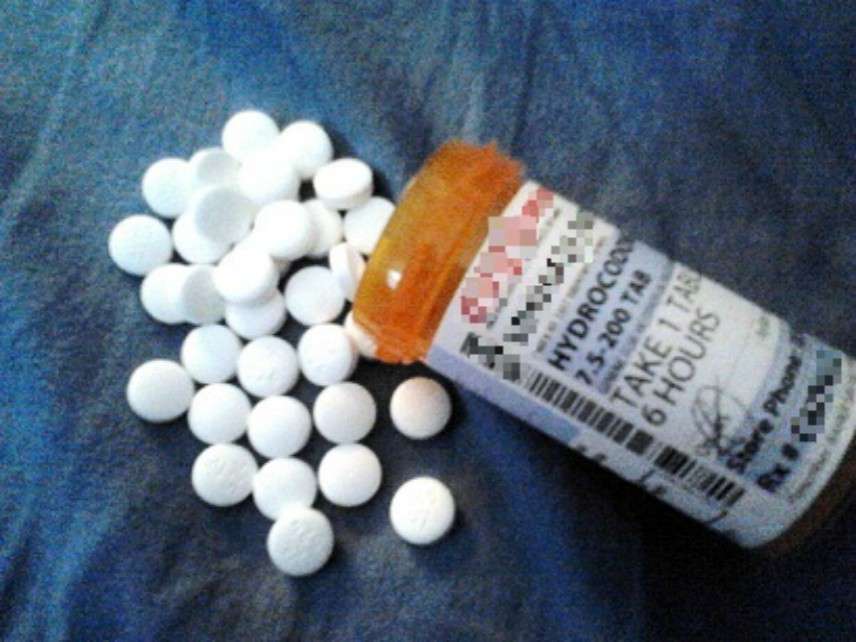Experts Urge CDC to Clarify Prescribing Guidelines That Are Hurting Pain Patients
The agency's opioid advice has led to arbitrary dose reductions, denial of care, senseless suffering, and suicide.

Yesterday more than 300 experts on pain treatment and addiction, including three former drug czars, urged the U.S. Centers for Disease Control and Prevention to clarify its 2016 opioid prescribing guidelines, which have led to arbitrary dose reductions across the country, depriving patients of the medication they need to make their lives bearable. The guidelines are part of a broader crusade against opioid prescribing that has left patients in agony and driven nonmedical users (as well as some pain patients) into the black market, where the drugs are far more hazardous. Unsurprisingly, the government-driven reduction in opioid prescriptions, which the Trump administration celebrates and wants to continue, has been accompanied by a continuing surge in opioid-related deaths, the vast majority of them involving illegal drugs.
"We urge the CDC to follow through with its commitment to evaluate the impact [of the guidelines] by consulting directly with a wide range of patients and caregivers, and by engaging epidemiologic experts to investigate reported suicides, increases in illicit opioid use and, to the extent possible, expressions of suicidal ideation following involuntary opioid taper or discontinuation," the letter to the CDC says. "We urge the CDC to issue a bold clarification about the 2016 Guideline—what it says and what it does not say, particularly on the matters of opioid taper and discontinuation."
The CDC's guidelines, addressed to primary care physicians, did not endorse involuntary tapering or discontinuation of care for chronic pain patients. But the document strongly implied that dosages exceeding 90 morphine milligram equivalents (MME) per day were dangerous and generally inconsistent with good medical practice. Doctors "should avoid increasing dosage" above 90 MME per day, the CDC said, or at least "carefully justify a decision to titrate dosage" above that level.
As for patients who already exceeded 90 MME per day, the CDC said "clinicians should work with patients to reduce opioid dosage or to discontinue opioids" if they determine that the risks outweigh the benefits. It noted that "tapering opioids can be especially challenging after years on high dosages" but said "these patients should be offered the opportunity to re-evaluate their continued use of opioids at high dosages."
This advice was widely interpreted by physicians, pharmacists, insurers, regulators, and legislators as a warning against prescribing more than 90 MME a day, even for chronic pain patients who have functioned well for years on high doses of opioids. "Within a year of Guideline publication," the letter notes, "there was evidence of widespread misapplication of some of the Guideline recommendations. Notably, many doctors and regulators incorrectly believed that the CDC established a threshold of 90 MME as a de facto daily dose limit. Soon, clinicians prescribing higher doses, pharmacists dispensing them, and patients taking them came under suspicion."
Reactions to the guidelines have included statutory limits on opioid prescriptions, "payer-imposed payment barriers, pharmacy chain demands for the medical chart or explicit taper plans as a precondition for filling prescriptions, high-stakes metrics imposed by quality agencies, and legal or professional risks for physicians, often based on invocation of the CDC's authority." As a result, "many health care providers [began] to perceive a significant category of vulnerable patients as institutional and professional liabilities to be contained or eliminated, rather than as people needing care."
The consequences for patients have included "draconian and often rapid involuntary dose reductions," inappropriate addiction treatment, pressure to undergo invasive procedures that may not be medically justified, increased use of illegal opioids as a substitute for previously prescribed analgesics, "unnecessary suffering," and in some cases suicide. "Under such pressure," the letter notes, "care decisions are not always based on the best interests of the patient."
That is quite an understatement, but the letter as a whole is strongly worded and properly puts the onus of action on the CDC, which in 2016 said it was "committed to evaluating the guideline to identify the impact of the recommendations on clinician and patient outcomes, both intended and unintended, and revising the recommendations in future updates when warranted." The fact that the signatories include people with a wide range of views about drug policy—among them Phoenix House founder Mitchell Rosenthal and Jerome Jaffe, Barry McCaffrey, and Michael Botticelli, who served as drug czars in the Nixon, Clinton, and Obama administrations, respectively—speaks volumes about the extent to which the indiscriminate push to reduce opioid prescribing has harmed pain patients.
The letter, which was coordinated by University of Alabama at Birmingham internist Stefan Kertesz and psychiatrist Sally Satel, a fellow at the American Enterprise Institute, includes reports from hundreds of affected patients. It follows similar expressions of concern by the American Medical Association and the Pain Management Best Practices Inter-Agency Task Force, which is advising the Department of Health and Human Services.
Thomas Frieden, who was director of the CDC when it produced the guidelines, seems to think there is no need for clarification or re-evaluation. "What the guidelines are being blamed for versus what they actually recommend are two different things," he told The New York Times.
But as Lynn Webster, a former president of the American Academy of Pain Medicine who signed the letter, told me last year, the CDC, given its status within the medical community, should have foreseen that its advice would be interpreted as a mandate. "The CDC bears full responsibility for how these arbitrary dose levels are being implemented throughout the country and the consequences for the people in pain," Webster said. "I said at the time when they were proposed that if something comes from the CDC as a guideline, it is more than a guideline. It will be interpreted basically as a level of dosing that if you exceed [it], then you are at legal jeopardy."


Show Comments (48)